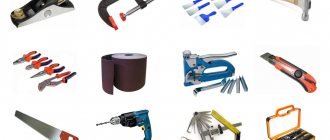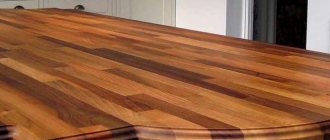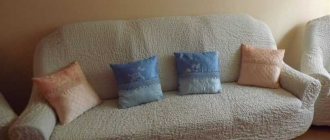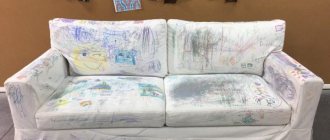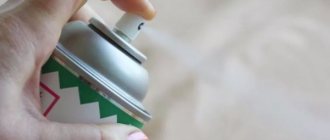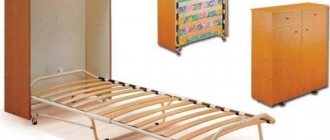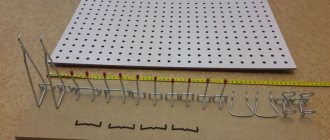The simplest and most obvious way to remove tape marks on furniture is to use special products. But, as often happens, they are not at hand at the right time. Then folk methods come to the rescue and help quickly and reliably solve the problem.
Important Before using any method, it is worth testing it in an inconspicuous area to make sure it is safe for a particular surface. This is especially true for fabric, as well as wooden, painted and glossy elements.
Hairdryer
One of the safest ways to clean furniture from traces of adhesive tape is hot air from a household hair dryer. The heat melts the glue. Just a few minutes is enough to soften old marks, and the remains can be easily scraped off with a plastic card or wiped with a cotton pad.
The method is well suited for wooden surfaces. A hairdryer is also indispensable for removing traces of double-sided tape. However, this method should be used with great care to clean plastic: it is easily deformed by high temperatures.
Homemade remedies
You can prepare excellent substances for removing adhesive prints from tape yourself at home; just mix the ingredients available in every home:
- Shaving foam mixed with tooth powder (equal proportions) is applied to the glue mark, wiped, and washed off with warm water.
- Dishwashing balm, baking soda, and warm water are mixed until a paste is obtained. Wipe the surface with this solution.
This composition produces a lot of foam, so you will need a lot of water for rinsing.
Oil
Vegetable and essential oils are also good for removing adhesive bases. But you need to be sure that the oil will not harm the furniture. It is strictly forbidden to use this method on a wooden surface if it is not varnished. For upholstered furniture it is also better to choose a different product.
Removing traces of adhesive tape with oil is a fairly long process, since it takes time to absorb:
- Apply the oil to the glue marks and wait a few hours.
- When the glue loses its properties, remove its remains with a napkin.
- Wipe the cleaned surface with soapy water so that no greasy marks remain on the furniture.
Sunflower oil often leaves behind an unpleasant odor; to avoid this, it is recommended to use essential oils.
Removing traces of glue from plastic parts
Plastic does not tolerate many types of cleaners, so you need to be careful when working with this material.
Best to use:
liquid detergents or shampoos;- baking soda;
- White Spirit;
- citric acid;
- vinegar.
Dish soap or shampoo
Shampoo, like dishwashing detergent, contains components that cope well with various types of dirt. After soaking the sponge in the solution, you should thoroughly soap the problem area.
After a while, the sticky glue will begin to come off. After completing the manipulation, the surface must be wiped with a soft cloth.
White Spirit
To prevent the plastic from becoming dull, it is better to mix the liquid with detergent and carefully wash off the dirt.
Baking soda
Baking soda helps quickly remove sticky marks and restores the shine of the surface. This powder removes old stains.
The area where the glue has dried is lightly moistened with water, then soda is applied to the wet spot.
After 2-3 minutes, when the powder has dissolved a little, you can begin to scrub off the dirt. It should give in quickly. If cleansing is difficult, you can also add a little citric acid.
Lemon acid
In the absence of vinegar, you should use lemon juice. It is poured onto the contaminated area, after which the remaining glue and powder are easily removed. Squeezing lemon juice and leaving it on the surface for 7-10 minutes can help.
Vinegar
Vinegar is called a natural solvent that does not spoil plastic and does not leave marks on it.
After soaking a cloth in the liquid, you need to wipe the sticky area. By combining vinegar with soda or citric acid, you can quickly get rid of even severe stains.
Acetone. Petrol. Nail polish remover
Universal and time-tested products. They easily clean even old traces of tape. Moreover, gasoline copes with this task much better than acetone and nail polish remover. Of course, you don’t need to use the same gasoline that is used in cars at home. For household needs, purified is ideal for lighters: it is less odorous and not so harmful.
Important: Gasoline, acetone, and nail polish remover are highly flammable and should not be used near fire. Also, these liquids are toxic, and they can only be used to remove tape in well-ventilated areas.
This method should not be used on plastic, glossy, varnished or painted surfaces, but it works well on glass and fabric items.
How to clean linoleum?
If the linoleum is not of very good quality, then you cannot wash the glue with abrasives and acetone. They will erase the drawing from the surface. Chemicals will not harm good material. The most gentle means:
- sunflower or essential oil;
- alcohol-containing products.
If these methods do not help, then you will have to use chemistry. In order not to spoil the linoleum, you can first check its reaction to the substance. To do this, take a small piece of material remaining after the repair and apply the product to it. If the drawing is not worn out, then the cleaning method can be used without fear.
Alcohol
Alcohol, be it ammonia, technical or medicinal, has long been used for cleaning from various contaminants and is used in many cleaning products:
- Moisten a cloth with alcohol.
- Remove glue.
This method is well suited for plastic, does not damage it and cleans even heavy dirt. Use alcohol with caution on varnished and painted items.
Features of cleaning polished furniture
Polished furniture does not tolerate mechanical stress and contact with abrasive substances. However, you can use baking soda to clean such items. To do this you need:
- Mix baking soda with water until a thick paste forms.
- Apply the paste to stained areas and leave for 5 minutes.
- Wipe off dirt with a dry cloth.
- Rinse off any remaining slurry with warm water and wipe dry.
Soda must be thoroughly mixed in water. Undissolved particles will leave behind noticeable marks.
To avoid damaging the varnished surface, such furniture can be cleaned with a soap solution.
WD-40
We should also mention WD-40, which has already become indispensable in households. The scope of its application is wide; it not only protects well, but also perfectly cleans, including the base of the adhesive tape.
Instructions:
- Apply a small amount of “Vedashka” to a cotton pad.
- Wipe away glue marks.
- Remove any remaining product with soapy water.
If there are many traces of tape:
- Spray the product onto the surface to be cleaned.
- Leave for one to two minutes.
- Clean the dirt with a piece of cloth.
- Remove any remaining product with soapy water.
But no matter how wonderful WD-40 is, it should be used with great caution, since the oils it contains are difficult to wash out, for example, from porous surfaces.
How to clean using household chemicals?
You can remove glue stains using cleaning products and detergents intended for other purposes.
Dishwashing liquid
This product can be used to clean almost any surface, except those that cannot be wet.
The method of use is simple:
- pour warm water into the ladle;
- add a few drops of detergent;
- moisten a sponge in the resulting solution;
- start rubbing.
The intensity of friction depends on the type of coating. So, polished or painted wood should be processed carefully, without strong pressure. And upholstery made of leather or leatherette can be well rubbed without fear of ruining it.
After treating with a soap sponge for 1-2 minutes, you should collect the foam with a clean rag and see if the tape comes off or not.
If it is not washed off completely, but the stain has decreased, the procedure should be repeated . If after rubbing the stain does not decrease, then you need to use another, more aggressive product.
Dry cleaning powders
The powder can be used to clean a hard, chemical and mechanically resistant surface. For example, this method is suitable for cleaning kitchen appliances or bathroom surfaces.
It is very easy to use:
- First, the powder is applied with a damp sponge;
- left for a few minutes;
- then rub the stain with the hard part of the sponge;
- during friction, the powder turns into a liquid soap mass, it should be washed off with water;
- if the stain has disappeared, the surface must be wiped dry;
- If the contamination remains, repeat the procedure until it completely disappears.
Glass products
If the product contains alcohol, it can be used to scrub an unpainted hard or soft surface . It is sprayed onto the contaminated area and then wiped with a sponge or soft cloth, depending on the type of surface.
After treatment, allow the stain to dry. And, if traces of glue remain, you need to do the procedure again.
Any chosen method, even the most gentle one, must first be tested on a small area of the surface.
Soap solution
You can remove glue stains using a solution of water and regular soap:
- the soap solution is applied with a sponge;
- the surface rubs a little;
- the remaining soap is washed off with a clean rag.
You can try to remove glue soaked in soapy water with a hard, non-sharp object, for example, a wooden kitchen spatula.
What to do to prevent the tape from leaving dirt
A few tips to help avoid traces of adhesive tape:
- Use masking tape, it leaves much less sticky spots.
- Do not stick the tape for a long time.
- Use quality tape.
- Attach the tape to a dry and clean surface.
- Remove the tape smoothly, without sudden movements.
- When removing the tape, use a hair dryer: it will help remove the tape without leaving any residue.
Adhesive tape marks look unsightly and collect dirt. Special means will allow you to get rid of glue, but if they are not at hand, folk methods will save the situation.
Why are tape marks difficult to remove from any surface?
Scotch tape is a sticky tape on which a special glue is applied. Manufacturers of expensive types use the highest quality glue, but it also remains on the surface after the film is removed.
Traces always remain. The only difference is the size of the pollution.
With prolonged contact of adhesive tape with furniture, you can sometimes observe severe contamination resulting from a chemical reaction. If the glue is not removed immediately, it will eat deep into the surface; if it is plastic, dust will settle on it.
How to remove remaining tape from a car?
You can remove stubborn glue residues from your car (windshield, dashboard, hood, tires, fenders, headlights, paintwork) using:
- vegetable oil;
- ammonia;
- apple or table vinegar;
- soapy water;
- duct tape.
Do not use White Spirit, gasoline, acetone and other solvents when processing paint coatings in a car.
You can clean the tape using traditional methods or using an aerosol WD-40 (a water-repellent agent that prevents corrosion).
